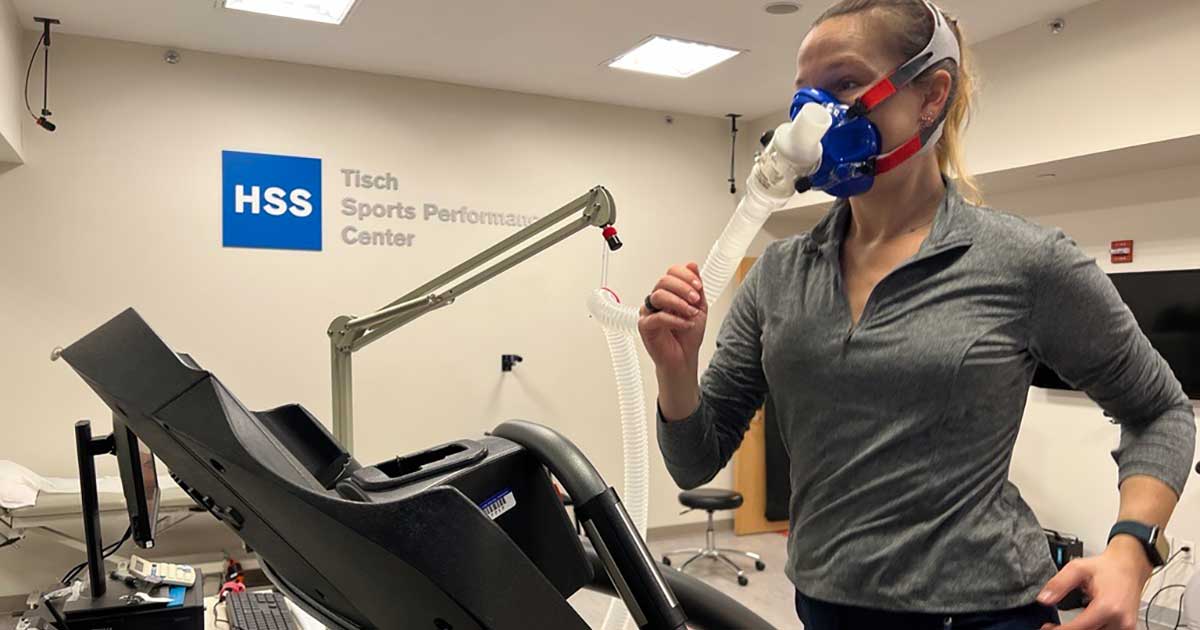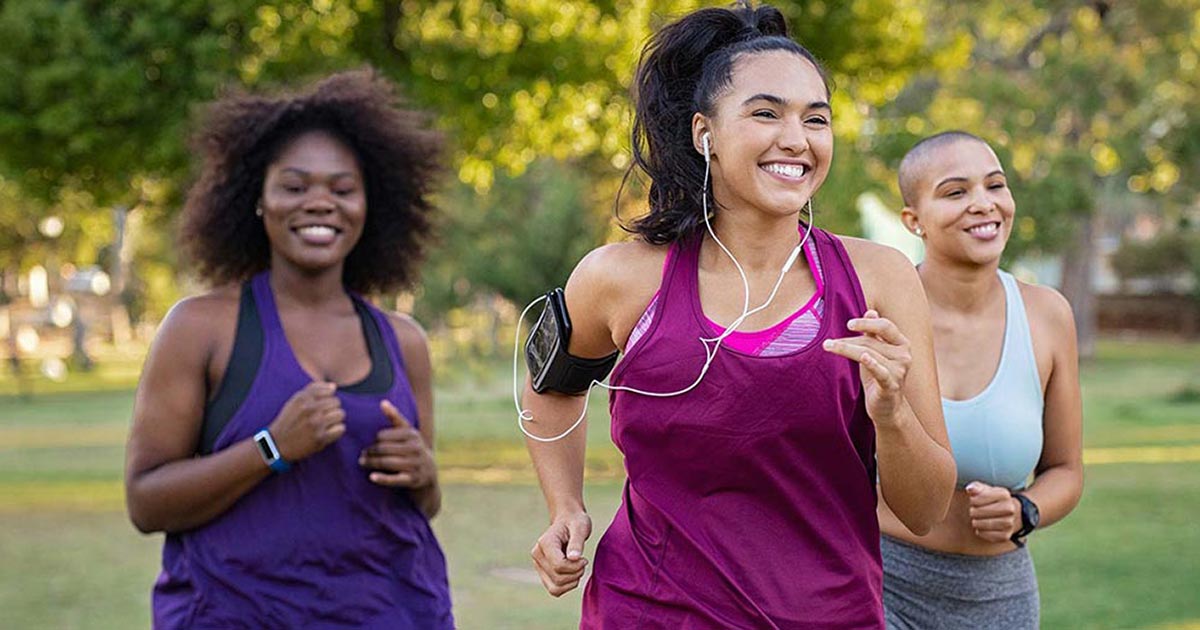What Is Metabolic Testing and How Can It Improve Your Health?
Advice to improve your movement, fitness, and overall health from the world's #1 in orthopedics.
If you have recently searched the internet for ways to run faster, cycle longer, or simply improve your health and longevity, you have probably run into the term “metabolic testing.” You might have seen photos of someone running on a treadmill while wearing a mask that’s attached by a tube to a computer with all sorts of numbers on the screen. You might have even seen an exercise physiologist leading them through the test. All of these assessments provide data about the person on the treadmill (or bike, or rower) and can be incorporated into their training program to improve performance. So what exactly are these assessments and how is the data they generate used?

“In simple terms, metabolic testing measures the amount of oxygen your body takes in during exercise and how much carbon dioxide is breathed out,” says HSS exercise physiologist Kate Baird, MA, ACSM-CEP, CSCS. During the test, a mask captures the air you breathe in and out as you move through various intensities of exercise, gradually getting more and more difficult. The air is sent through the Parvo TrueOne metabolic cart, the same system used in Olympic Training Centers, to be analyzed. “The physiological data generated by this analysis helps determine your current fitness level and areas that may be targeted for improvement based on your goals,” says Baird. “Additionally, we can track the accumulation of lactate in the blood, a byproduct of intense exercise, which involves a finger prick to obtain a drop of blood during exercise.” From this, the exercise physiologist working with you on the test will then interpret the following indicators:
- Maximum Aerobic Capacity: This is the maximum amount of oxygen the body is capable of using during intense exercise, known in technical terms as VO2 max. This is a marker of physical fitness, health and longevity, and a key indicator of one’s potential as an endurance athlete, says Baird.
- Lactate Threshold: During exercise of increasing intensity, this is the point at which blood lactate levels begin to rise rapidly and fatigue ensues. The lactate threshold indicates one’s maximum sustainable pace and has been found to be a reliable predictor of long distance/endurance race performance. The lactate threshold can be increased significantly with targeted training.
- Metabolic Efficiency: This measures the total number of calories burned at a given exercise intensity and the percentage coming from an athlete’s stores of fat versus carbohydrates. This information is useful for planning both training and nutrition needs for endurance events. Certain training techniques may improve an athlete’s ability to burn a greater percentage of fat (instead of carbohydrates) during exercise. Athletes who can tap into their stored fat and leave their carbohydrate stores untouched during exercise can be less reliant on gels, bars, and sports drinks for fuel. “This could be significant for mountain climbers who could reduce the amount of food carried in their backpack or for marathon runners who find it difficult to tolerate sports nutrition products while running,” says Baird.
- Exercise Economy: The amount of oxygen a person consumes at their race pace is compared to the amount consumed by elite athletes. If poor form is affecting performance, HSS staff can offer training tips to help athletes become more efficient in the mechanics of their sport.
Incorporating Metabolic Testing Results into Training
Once all of this data is collected, your performance profile can serve as a basis for an individualized plan. “Since time is a valuable resource for many people, the ability to train smarter and more efficiently with the time you do have can serve as a major benefit,” says Baird. You will receive a report that recommends target training zones as well as areas where performance gains are possible. This might include raising the aerobic ceiling, raising lactate threshold to be able to sustain a faster pace, or developing strategies to improve metabolic efficiency.
Those interested in testing should plan to spend one and a half hours at the appointment, although the actual testing generally takes around 30 minutes. Immediately following the assessment, the exercise physiologist will provide some insight into the results, while a more detailed report is provided in the days following. “We find that the athletes are very happy to gain insight into their own physiology so they can fine tune their training, improve their performance, and enjoy the satisfaction of personal achievement,” says Baird.



